The range of belay devices has grown exponentially in the last few years, which means there’s plenty to choose from. Many devices have become quite use-specific, but they all follow the basic principle: the device will help you to control the flow of the rope, and therefore, help you to stop a falling climber.
A modern belay device (or ‘belay plate’) can be simple: the width of a credit card, with no moving parts and light weight. They can also be more high-tech: the size of a fist, with multiple parts, buttons and dials.
All devices are generally hard-wearing and suitable for a wide range of activities. However, they all need maintenance and inspection, as they’re a vital part of the climbing safety system. Some devices are only suitable for one rope or one activity (for example, sport climbing). Others are better suited for using with two ropes as is common in trad or alpine climbing.
Climbers will often have several belay devices, used for the most appropriate situation. The best device for you depends on several factors, including your own experience, the type of climbing you’ll be doing, what rope you’ll use, and your budget. In this article, we’ll tell you about the most common belay devices, and then you’ll be able to choose which suits you. Remember, it’s best to try a few devices before you buy. All devices have similar actions to give out rope (‘slack’) and take in the rope (‘take in’). However, it’s very important to follow the basic principles of belaying, and this is best learnt through expert instruction. You should always have a hand on (and full control over) the ‘brake’ side of the rope and always read the manufacturer’s instructions before use.
Retailers and/or a climbing wall with a shop should be happy to chat through the pros and cons of the particular devices they offer. Many brands also have excellent ‘how to’ videos to help you get to grips with the different techniques.
Slot Devices
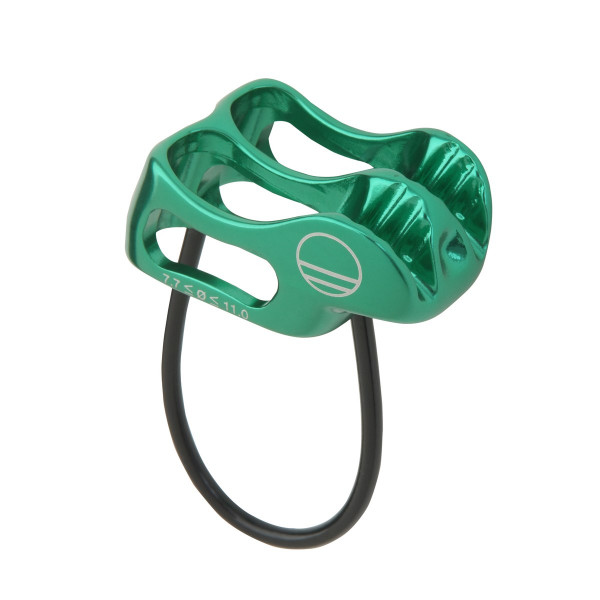 Slot devices are the simplest, lightest and cheapest devices available, and for many, are the only device they’ll ever need! They can work well for trad, alpine, climbing walls and sport, across a wide variety of rope thicknesses and double/twin ropes - even if your ropes are wet, dirty or frozen. They all function in a similar way: a bend of rope is pushed through a slot in the belay device, and then clipped with a carabiner (pear or ‘HMS’ shaped krabs are best). The purpose of the device is to create friction, making it easier for you to control the flow of the rope. When using the device (‘belaying’), you can easily hold the weight of a climber on the rope, lower a climber, and even catch them when they fall onto the rope. When the rope runs through the belay device, there are two sides: a ‘climber’ side and a ‘brake.’ All of these controls are done on the braking side of the rope.
Slot devices are the simplest, lightest and cheapest devices available, and for many, are the only device they’ll ever need! They can work well for trad, alpine, climbing walls and sport, across a wide variety of rope thicknesses and double/twin ropes - even if your ropes are wet, dirty or frozen. They all function in a similar way: a bend of rope is pushed through a slot in the belay device, and then clipped with a carabiner (pear or ‘HMS’ shaped krabs are best). The purpose of the device is to create friction, making it easier for you to control the flow of the rope. When using the device (‘belaying’), you can easily hold the weight of a climber on the rope, lower a climber, and even catch them when they fall onto the rope. When the rope runs through the belay device, there are two sides: a ‘climber’ side and a ‘brake.’ All of these controls are done on the braking side of the rope.
Many slot devices have additional grooves for extra friction, and often a method to prevent the device rotating (‘cross-loading) on the carabiner. An advantage of these devices is that you can use them both ways around (either with the additional grooves, or without). Slot devices can be prone to user error with inexperienced climbers, as they’ll allow the rope to flow through them very easily - you must always have a hand on the brake side of the rope. Slot devices are not preferable for sport or indoor climbing because there are easier devices to use; especially if there’s a significant weight difference between belay/leader.
Examples: Black Diamond ATC, Petzl VERSO, DMM Bug, Variable Controller, Pro Lite, Mantis, BRD
Best For: One device which can be used for a wide range of rope diameters; all types of climbing; two ropes at a time; all conditions; low cost.
Slot Devices with ‘Assisted Braking’ Or 'Guide Mode'
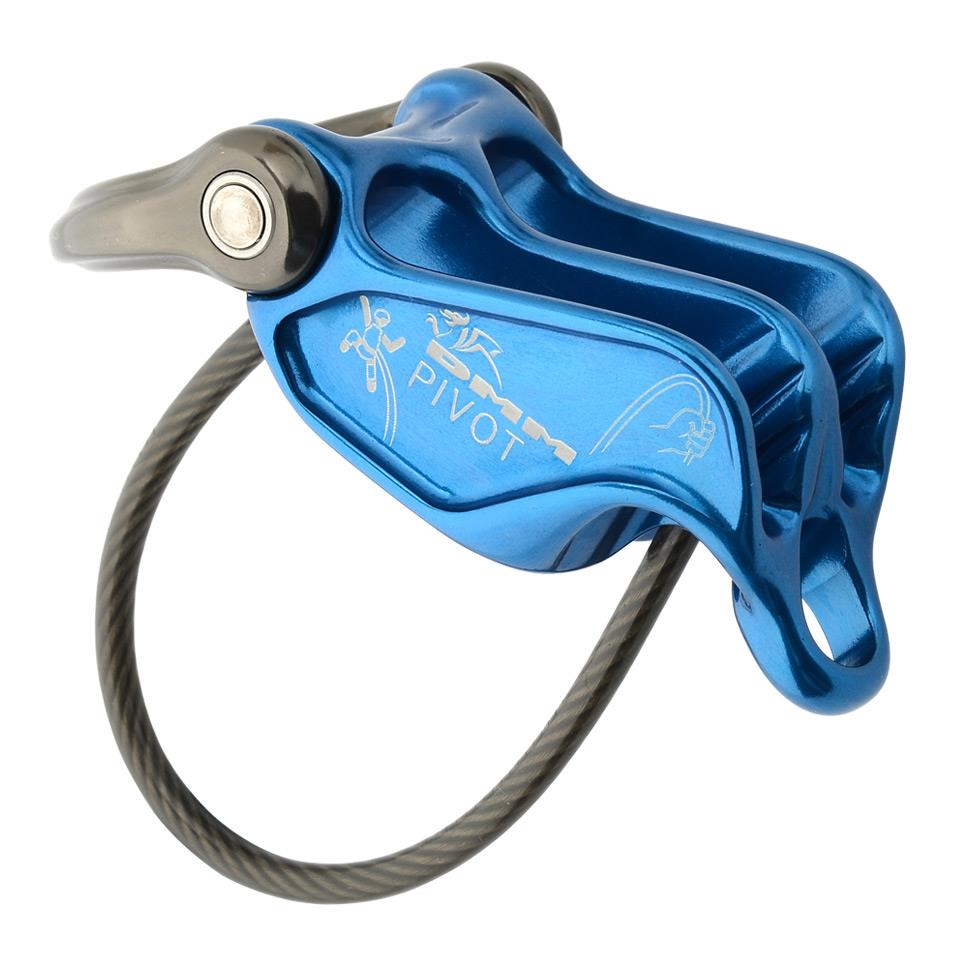 There are some belay devices which are multi-functional: they have a ‘mode’ (or orientation) which allows assisted braking when belaying one or two seconding climbers from the top of a pitch, typically described as 'Guide Mode'. This means the belayer must still pay attention and belay correctly - but if the climber(s) fall off, or need to rest by weighting the rope, the device will help the process.
There are some belay devices which are multi-functional: they have a ‘mode’ (or orientation) which allows assisted braking when belaying one or two seconding climbers from the top of a pitch, typically described as 'Guide Mode'. This means the belayer must still pay attention and belay correctly - but if the climber(s) fall off, or need to rest by weighting the rope, the device will help the process.
These devices have all the advantages of standard Slot devices detailed in the section above - but with the added benefit of ‘assisted braking’ for seconding climber(s). They are commonly used on multi-pitch climbs, where the belayer must also be doing other tasks like checking the route ahead, or eating and drinking. When used in this way, the belayer can give slack - or take in - one or both ropes simultaneously.
Examples: Black Diamond ATC Guide, Petzl REVERSO, DMM Pivot.
Best For: The benefits of slot devices, but with the extra feature of assisted braking mode.
Geometry Assisted Braking Devices
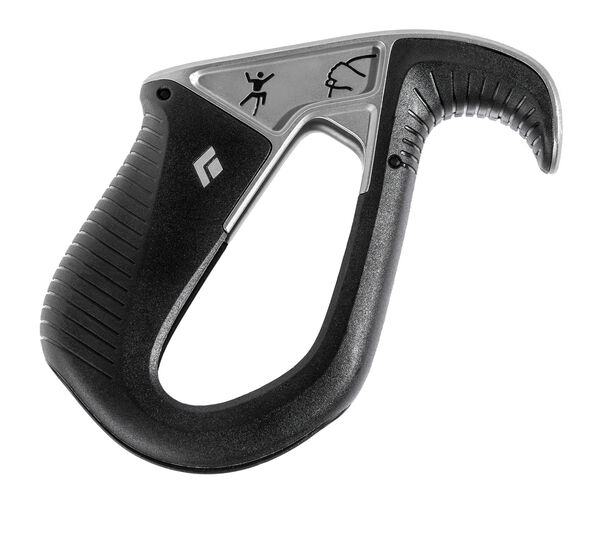 These belay devices actively help you to control the rope in falls and lowering. The assistance is generated by the geometry of the device which engages to create extra friction.
These belay devices actively help you to control the rope in falls and lowering. The assistance is generated by the geometry of the device which engages to create extra friction.
Geometry assisted braking devices are available for single or double ropes and can often use a wide range of diameters and can also be used for trad climbing. They can be lightweight and simple devices and work well for a range of climbers.
Although they must always keep a hand on the brake side of the rope (as for Slot devices), these devices assist with locking the rope if a climber falls or is resting/working a route. The device can also remain ‘locked off’ for long periods of time with greater ease than a slot device (for example, when a climber is resting between attempts). Care must be taken to ensure the rope is threaded the correct way. Although many of these devices can be used with a wide range of carabiners as with all belay devices care or a specific system needs to be taken to prevent them rotating (‘cross-loading’).
Examples: Black Diamond ATC Pilot, Climbing Technology Click-Up, Edelrid Jul, Mammut Smart
Best For: The benefits of slot devices, but with the extra feature of assisted braking. Often cheaper, lighter and simpler than the 'Assisted Braking' Devices below.
Assisted Braking Devices
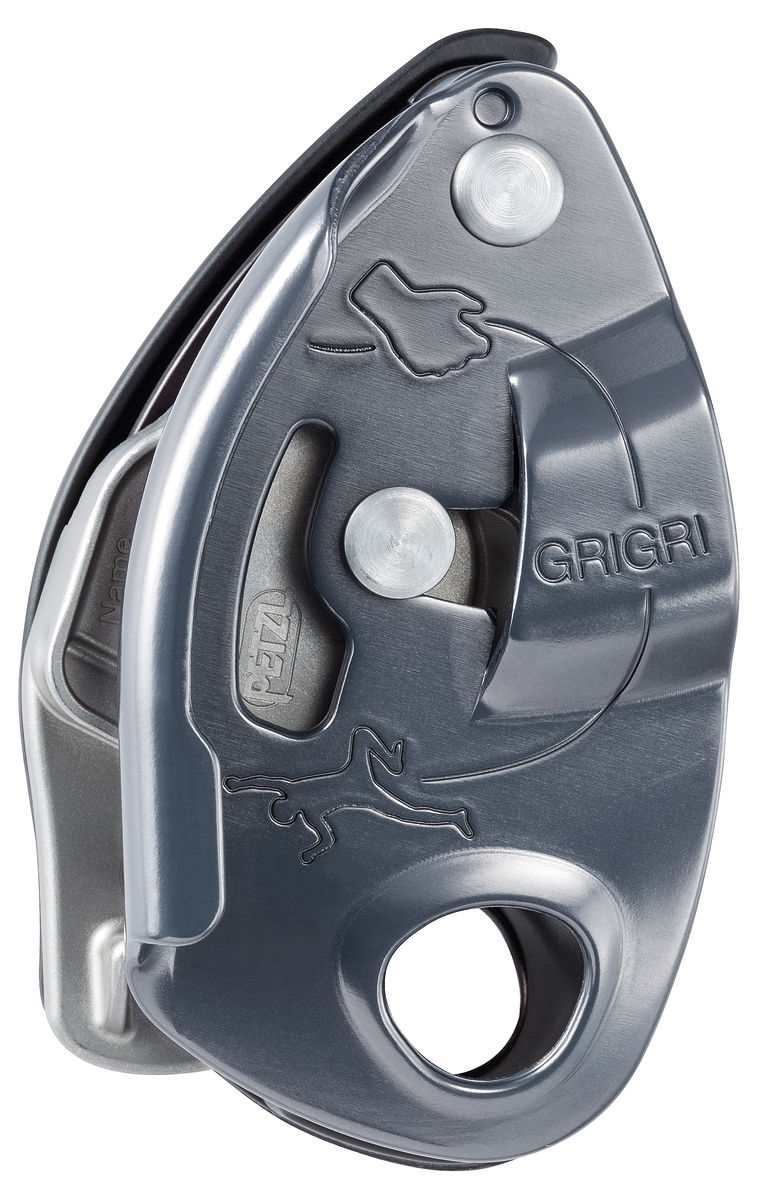
These belay devices help you to control the rope with moving parts, typically a cam, which engage to create extra friction, they positively assist the belayer to hold a fall and when the climber is working a route.
Assisted braking devices only allow one rope to be used. Their design means they can frequently only use a smaller range of rope diameters, further limiting their usage. They also can’t be used reliably with icy ropes (such as in winter). However, assisted braking devices are still the most popular choice for sport or indoor climbing with their very positive brake assistance, because the ropes used are likely to be similar diameters and it’s (hopefully) nice and warm! Assisted braking devices are also more convenient to use in the above-mentioned situations, giving the belayer an easier job. Although they must always keep a hand on the brake side of the rope (as for slot devices). The device can also remain ‘locked off’ for long periods of time (for example, when a climber is resting between attempts) and they typically have a handle for release of the 'lock' which makes it easier to lower a climber, as the belayer has greater control over the rope.
Petzl's GRIGRI+ also has an anti-panic handle and two modes: ‘top rope’ and ‘lead.’ The former is ideal for learning how to belay, and gives a greater level of brake assist. The latter helps the belayer to give slack and take in the rope smoothly.
Some assisted braking devices can create twists in the rope, which can be annoying. Since they have a more complex construction and moving parts, they can also become clogged with dirt and dust, which must be removed. The device can also be used incorrectly by loading the rope the wrong way around. Although many of these devices can be used with a wide range of carabiners as with all belay devices care or a specific system needs to be taken to prevent them rotating (‘cross-loading’).
Examples: Petzl GRIGRI, Wild Country Revo, Camp Matik, Beal Birdie
Best For: The benefits of Slot devices, but with the extra feature of assisted braking mode, particularly for sport climbing/working routes.
Choosing A Carabiner
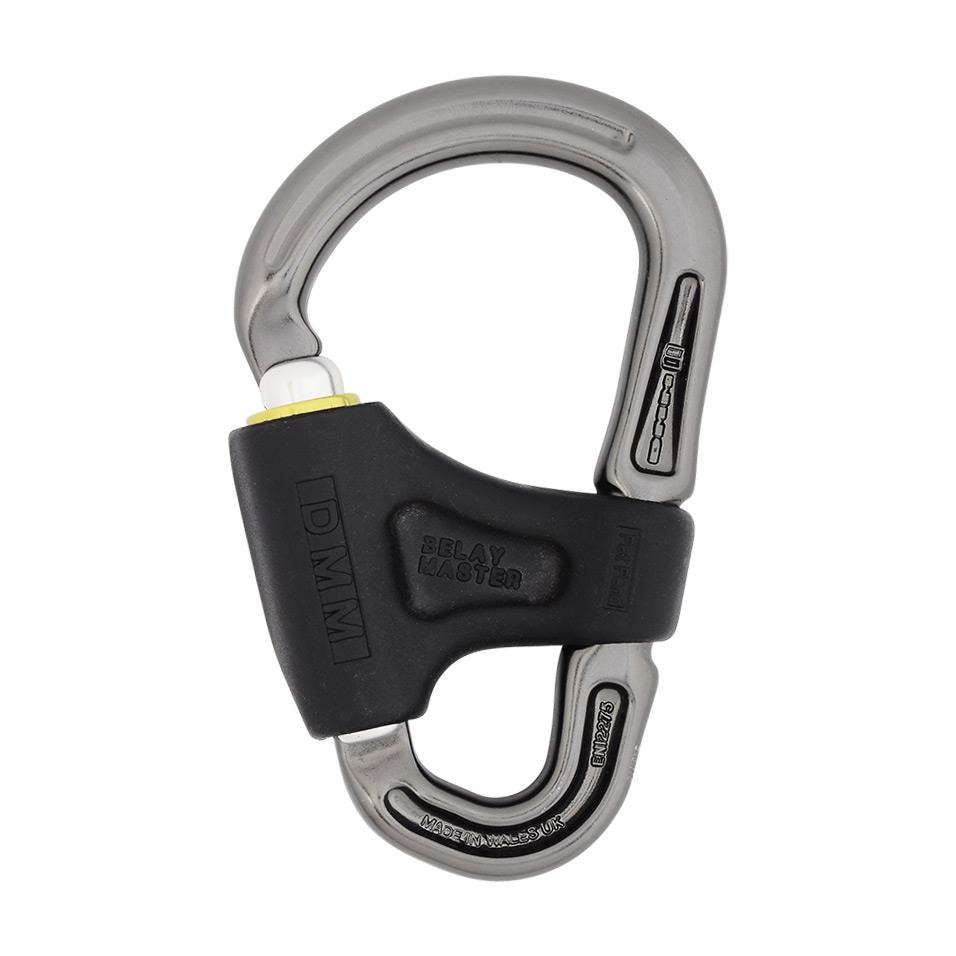 A locking carabiner is essential for all belay devices, you don't want the belay plate to come undone from the carabiner by accident.... There are many shapes and models. As mentioned above, a pear-shaped or ‘HMS’ locking carabiner is best for slot devices, as it reduces wear on the rope and carabiner, and helps to reduce the chance of the carabiner cross-loading.
A locking carabiner is essential for all belay devices, you don't want the belay plate to come undone from the carabiner by accident.... There are many shapes and models. As mentioned above, a pear-shaped or ‘HMS’ locking carabiner is best for slot devices, as it reduces wear on the rope and carabiner, and helps to reduce the chance of the carabiner cross-loading.
Most carabiners lock the gate by a screwing section, and are called ‘screwgates.’ You can also get gates which lock using a double or triple-action gate. Black Diamond even make a gate which remains closed using magnets. They are all less likely to come undone than a classic screwgate, and can actually be easier and quicker to operate (but only when you know how). However, these gates are harder to use with cold or gloved hands, so aren’t a natural choice for winter or alpine climbing.
Some locking carabiners have features such as a bar or tooth which minimise cross-loading when used with belay devices and are recommended for all belay use, examples such as the DMM Rhino, DMM Belay Master, Petzl Freino, Black Diamond GridLock and Wild Country Ascent Lite are all widely available.
Summary
Choose a belay plate which is suitable for you and your requirements (for example: beginner or expert; thin or thick rope; multi-functional or single use; single or multi-pitch; all-weather or dry conditions; one rope or two; reliability or ease of use; lightweight or durable; and sport/indoor climbing or trad/alpine climbing).










